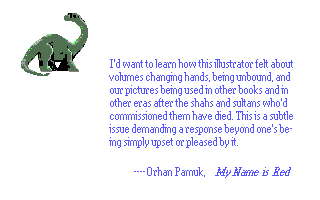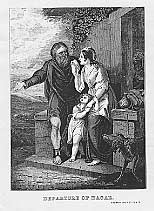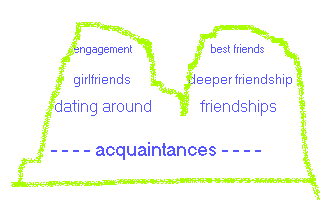Plot Details: This Review Reveals Minor Details About the Plot.
Life is short and then you die.

Plot Overview
“The Fault in Our Stars” (TFiOS) opens on the eyes of 16-year-old Hazel Grace Lancaster (Shailene Woodley) gazing at the stars in the sky and contemplating the “choice in this world how to tell sad stories.” Her story is: “the truth, sorry.” She had inoperable cancer at 13 and was put on an experimental drug that was less than promising. It worked for her despite the pessimism of parents and nurses. They called it a miracle. Her lungs aren't functioning at full capacity, though, so she breathes oxygen through a tube and is not long for this world.
She has a favorite book An Imperial Affliction by the Dutch-American author Peter Van Houten (Willem Dafoe.) She reads it over and over. It's about Anna a girl with cancer who dies from it. The reclusive author doesn't reply to her hundred fan letters; he doesn't reply to anybody.
 At 16
she and a boy 18 Augustus Waters (Ansel Elgort) in her cancer support
group exchange reading interests, and for some reason the author
Van Houten, through his assistant, replies to his e-mail and
invites him & her to Amsterdam to answer her burning questions
about what happened to the other characters in the book after the
first-person narrator died—he doesn't send the answer in the
open because he doesn't want published an inadvertent sequel. Hazel
had already used up her wish from the Genies (a
Make-A-Wish—Foundation sort of organization), but Gus still
has his, so they arrange to go on it. Unfortunately, her doctor doesn't
think she's fit for travel, but then relents for a three day stay
instead of six. So they end up in the Netherlands at the writer's
home who refuses then to see them. But his assistant persuades him,
and she gets to ask her questions about what happened after the story,
to wit: the fate of Anna's mother and her relationship with the
“Dutch Tulip Man”, and of Anna's pet hamster Sisyphus.
They can't just have gone into oblivion when the story ended.
At 16
she and a boy 18 Augustus Waters (Ansel Elgort) in her cancer support
group exchange reading interests, and for some reason the author
Van Houten, through his assistant, replies to his e-mail and
invites him & her to Amsterdam to answer her burning questions
about what happened to the other characters in the book after the
first-person narrator died—he doesn't send the answer in the
open because he doesn't want published an inadvertent sequel. Hazel
had already used up her wish from the Genies (a
Make-A-Wish—Foundation sort of organization), but Gus still
has his, so they arrange to go on it. Unfortunately, her doctor doesn't
think she's fit for travel, but then relents for a three day stay
instead of six. So they end up in the Netherlands at the writer's
home who refuses then to see them. But his assistant persuades him,
and she gets to ask her questions about what happened after the story,
to wit: the fate of Anna's mother and her relationship with the
“Dutch Tulip Man”, and of Anna's pet hamster Sisyphus.
They can't just have gone into oblivion when the story ended.
I once knew an old mystic named Harold who'd traveled to Tibet to seek enlightenment from a Zen master. He camped out in front of the gate to his monastery until finally one day the Guru appeared and asked him, “How is everything?” Harold replied, “Fine.” At that the master said, “Then you don't need me” and turned around and went back inside. Harold was able to shrug it off with, “I should have said, ‘I'm Fine.’” Hazel had her own parting words: “Go fuck yourself!” [sic].
Ideology
John Green the author of the book that became this movie is an Episcopalian who, according to an interview in “The Sydney Morning Herald,” was enrolled in divinity school to become a minister, with a double major in English and Religious Studies. TFiOS is evidently a celluloid rendering of what in Christian circles we call the courtship vs dating debate. In olden days when people lived in the same village all their life, and they all knew all about each other, intentions were pretty serious once a couple started stepping out together, and their close-knit families had a say in their matches. That was courtship. Come the mobility of the American frontier west, and now city life, we don't know each other so well, and we use dating to sort out prospective matches. A home-schooled adolescent named Joshua Harris gave up on dating on account of some bad experiences and went back to an older courtship model, with his family's support, and wrote the controversial book: I Kissed Dating Goodbye. My movie review of “Mr. Woodcock,” dealing with an author and his stupid book, lends itself eminently to Josh Harris.
 Steve Gregg host of the radio talk show The Narrow Path
was discussing this controversy on 8/21/2014. He and the caller found
it problematic that men and women are set up for continuity and
therefore find it traumatic to break off serial relationships
before settling on a permanent match, nor does that prepare them to stick
with one mate once married. They prefer the courtship model instead.
Steve Gregg host of the radio talk show The Narrow Path
was discussing this controversy on 8/21/2014. He and the caller found
it problematic that men and women are set up for continuity and
therefore find it traumatic to break off serial relationships
before settling on a permanent match, nor does that prepare them to stick
with one mate once married. They prefer the courtship model instead.
 Paul Dobransky M.D., in
his book The
Secret Psychology of How We Fall in Love, gives the scientific
method for a woman to date a man until she realizes he is Mr. Wrong
and then break up with him. After enough breakups with Mr. Wrongs,
she will eventually end up with Mr. Right whom she'll feel confident
marrying. That's the dating method.
Paul Dobransky M.D., in
his book The
Secret Psychology of How We Fall in Love, gives the scientific
method for a woman to date a man until she realizes he is Mr. Wrong
and then break up with him. After enough breakups with Mr. Wrongs,
she will eventually end up with Mr. Right whom she'll feel confident
marrying. That's the dating method.
From an adult point of view, one wants to not date a person from a class he would never want to marry into, because what would he do if they fall in love? The courtship vs dating debate frames it bass-ackwards by considering dates automatically dead-end adventures. This movie takes their perspective anyway by having adolescent protagonists with life expectancies too short to become adults to marry, and then it looks at the value of dating within such limited time constraints.
In TFiOS Gus's friend Isaac (Nat Wolff) has only one eye left and it's due to be removed. He has a “smoking hot girlfriend” Monica (Emily Peachey) who vows with him to be together “always.” Well, her always wasn't as long as his always, so he ended up blind, with no girlfriend, and traumatized to the point of a psychotic episode hard to deal with. It seems a perfect example to support the courtship method instead.
Peter Van Houten sets the problem of two going at different speeds resulting in a split as follows: Say you are racing a tortoise that has a 10 yard head start. You run 10 yards but it has gone a yard in that time. This can go on forever, and you'll never pass that tortoise. Because of the “forever” criterion, practitioners of the courtship method will never break up with someone not suited for them. I have posted an illustrative story in a relationship articles series. Van Houten's solution to the tortoise problem was “Cantor's proof that some infinities are bigger than other infinities.” German mathematician Georg Cantor stirred up considerable controversy in his day impinging on philosophy and even religion when many felt there was but a single infinity, the province of God. From my engineering perspective, there are two infinities, countable and uncountable, that differ in cardinality. There may be others but they'd be beyond my ken.
In the movie's St. Paul's Cancer Support Group at St. Paul's Episcopal Church, they open with a mesmerizing song: “Christ is our friend, and He'll be there till the end. Christ, Christ, … .” Author John Twelve Hawks gives us this infinity: (78)
When the person prays, the prefrontal cortex is focused on the words. Meanwhile the superior parietal lobe at the top of the brain has gone dark. The left lobe processes information about our position in space and time. It gives us the idea that we have a distinct physical body. When the parietal lobe shuts down, we can no longer distinguish between our self and the rest of the world. As a result, the subject believes that he or she is in contact with the timeless and infinite power of God. It feels like a spiritual experience, but it's really just a neurological illusion.
All that intense prayer and focus, and then the making out after the meeting left Isaac and Monica a bit disconnected from earthly reality, wherefore they “don't understand the promises they're making when they make them.” Gus and Hazel, on the other hand, wisely decide that “Okay” can be their “Always”.
They start out by following a de facto courtship model but with no
hope of ever getting married, so they immerse themselves in
group fellowship (“We're just friends.”)
However, after the fiasco with the author of fictional characters
(“Nothing happens; they're fictional”),
they proceed to the erstwhile abode of nonfiction writer
Anne Frank (1929–1945) who after her death did leave real family
members (a few) behind. Brave Hazel with her diminished lung capacity
climbs the stairs—there is no elevator—past Anne's posted
diary entry: “I long to ride a bike” of a girl who never
would, with the determination of the philosopher who said, (Eccl. 9:10) “Whatsoever thy
hand findeth to do, do it with thy might,” and ![]() at the top of the stairs kisses
a guy (with vigor) to the accolades of the public. Later they can
go on to making out, and she'll tell the minister who refers to Gus
as her “special friend” that she's his “girlfriend.”
To Gus she'll convey that “Some infinities are higher than other
infinities. I cannot tell you how thankful I am for our little
infinity.” She's happy to share a part of him always. This movie
shows them having embraced the dating model with emotional maturity
and satisfaction even though marriage is not seen as an end.
at the top of the stairs kisses
a guy (with vigor) to the accolades of the public. Later they can
go on to making out, and she'll tell the minister who refers to Gus
as her “special friend” that she's his “girlfriend.”
To Gus she'll convey that “Some infinities are higher than other
infinities. I cannot tell you how thankful I am for our little
infinity.” She's happy to share a part of him always. This movie
shows them having embraced the dating model with emotional maturity
and satisfaction even though marriage is not seen as an end.
 Cantor is best known for having invented set theory. Gus employs
it when he draws a Venn
diagram with virgins being set ‘A’,
and 18-year-olds with one leg set ‘B’. He's in the
intersection of both sets.
Cantor is best known for having invented set theory. Gus employs
it when he draws a Venn
diagram with virgins being set ‘A’,
and 18-year-olds with one leg set ‘B’. He's in the
intersection of both sets.
 Later after they engage in “debauchery” Hazel will have to
redraw the diagram placing set ‘A’ outside of set
‘B’, although technically we suppose they still intersect,
it's just that Gus is no longer in ‘C’.
Later after they engage in “debauchery” Hazel will have to
redraw the diagram placing set ‘A’ outside of set
‘B’, although technically we suppose they still intersect,
it's just that Gus is no longer in ‘C’.
Because they had held off from any physical intimacy whatsoever until the dam broke, it happened “slowly, then all at once.” They'd have done better at avoiding fornication had they done regular dating from the start, with its commensurate proportional intimacies. Isaac and his girlfriend would have done better not to be so focused around the group fellowship meetings. This is somewhat counterintuitive, and director Josh Boone has given us a movie that shows the courtship approach yielding the very results from the dating approach it had tried to avoid.
Production Values
“The Fault in Our Stars” (2014) was directed by Josh Boone. Its screenplay was done by Scott Neustadter & Michael H. Weber, lifted whole from John Green's popular YA book The Fault in Our Stars. It stars Shailene Woodley, Ansel Elgort, and Nat Wolff. Woodley gave a suitably nuanced performance and the rest held their own. The music draws one in. Amsterdam was beautifully photographed by cinematographer Ben Richardson. It was rich in symbolism and in closeups. For some reason every crowd scene in the Netherlands contained a Negro in it somewhere, by accident or design, contrary to Dutch stereotype.
Review Conclusion w/ Consumer Recommendation
I appreciated the sly commentary on a familiar religious debate and the use of a controversial mathematician (who eventually went crazy as some of them do.) Women tend to weep at the end. It's a little long, but I think it's worth it. A great movie but maybe not a classic.
Movie Ratings
Action Factor: Weak action scenes Suitability for Children: Suitable for children 13+ years. Special effects: Average special effects. Video Occasion: Good for Groups. Suspense: Don't watch this movie alone. Overall product rating: Four stars out of five.
Works Cited
Twelve Hawks, John. The Traveler. New York: Doubleday, 2005. Print.


